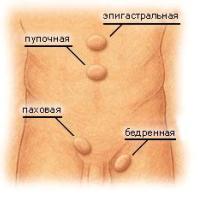Spilled purulent peritonitis arises as a complication of purulent diseases of the abdominal cavity. In most cases, it is developing gradually from local peritonitis, but with probulous, hematogenous, cryptogenic and pneumatic lesions of the peritonean, often from the very beginning weares diffuse.
Content
The concept of spilled (diffuse) peritonitis
In purulent diseases of the abdominal cavity organs, the peritonitis is usually developing gradually from local peritonitis. With probulous, hematogenous, cryptogenic peritonitis, as well as with pneumococcal peritonitis, the defeat of the peritonean often becomes diffuse from the very beginning.
Basic symptoms of the disease
Of the general symptoms of peritonitis have the diagnostic significance of nausea and vomiting. Initially, there is a vomiting with ordinary gastric content, then indocode (vomiting bile, often with a grinding smell). Vomiting gradually studied and with purulent spilled peritonitis often becomes exhausting, leading to dehydration. Receiving fluid and food becomes almost impossible, despite the presence of painful thirst.
The appearance of the patient indicates severe intoxication and dehydration. The features of the face are sharpened, the pallor appears with a grayish or cyanotic tinge, dry lips, braided, on the face and limbs are cold sweat. In particularly severe cases, yellowness appears, testifying to toxic lesions of the liver or hemolysis.
In bed, the patient usually does not try to change the situation, since each movement enhances pain. Many take a characteristic posture with the thighs reduced to the belly (especially with probulic peritonitis). At the very beginning of the disease, concerns are noted by its condition, later there may be inhibition. With further increments of intoxication, euphoria occurs, which serves as a bad prognostic sign. In this period, the disease often appear aimless, poorly coordinated movements with hands near the mouth, nose. Pain with such severe intoxication decreases, which can create an erroneous impression of improving the condition of the patient. In this, in fact, the final, the period of the disease is often developing intoxication psychoses. However, in the overwhelming majority of cases, consciousness persists before the onset of agony.
 The pulse is the more often than heavier intoxication (100-120-140 beats per minute). Blood pressure as increasing intoxication falls. In the terminal phase, severe collapse develops, from which the patient is almost impossible to derive.
The pulse is the more often than heavier intoxication (100-120-140 beats per minute). Blood pressure as increasing intoxication falls. In the terminal phase, severe collapse develops, from which the patient is almost impossible to derive.
Temperature rises at the beginning of the disease to 38-39°, But parallel to deterioration of the patient may decrease. In the terminal period of the disease, it often turns out to be below 36°. It is characteristic that with increasing tachycardia, most often no correspondence between body temperature and pulse frequency.
Chills occurring at a relatively low temperature testifies to very severe intoxication.
The pain is sharpened in the initial phase of the probulic peritonitis. Although with diffuse peritonitis, the pain covers all the stomach, but its intensity is long remaining higher in the zone of the primary pathological focus. As inxication increases, the pain often subsides. Weaker than all pain is expressed in rapidly developing septic peritonitis. When palpation is painful, all the stomach, but especially sharp pain is often noted when pressed on the navel. Symptom of Brush - Blumberg is also expressed throughout the abdomen.
The tension of the abdominal wall muscles, extremely characteristic for peritonitis, as the general state of the patient can gradually disappear, and the intensity and stomach parishes increases.
Cease to listen to peristaltic noises. With auscultation of the abdomen marks «Coffin silence», But wired breathing noises can.
The bloating sharply makes it difficult to breathe, makes it purely chest, and circulatory disorders and often joining pneumonia contribute to increasing shortness of breath.
In the presence of an exudate in the abdominal cavity, the dulling of a percussion sound in gentle places of belly is determined.
Diagnosis of the disease
In the study of blood, the increasing leukocytosis is observed (up to 20,000 and higher, but most often leukocytosis turns out from 9000 to 15,000), a sharp shift of the leukocyte formula. At the same time, severe septic peritonitis can cause the oppression of leukeopoies. Leukopenia with obvious peritonitis indicative of the extremely severe form of illness.
For diffuse peritonitis is also characterized by increasing hypochromic anemia. Roe sharply accelerates.
In the urine, protein, red blood cells, leukocytes, granular cylinders appear, and the total amount of urine decreases.
In the elderly, the symptoms of peritonitis often turn out to be weakly pronounced, and their progression is much slowed down. In children, on the contrary, there is more often the rapid development of peritonitis. The accumulation of the inflammatory process in the abdominal cavity has much less frequently than adults.









